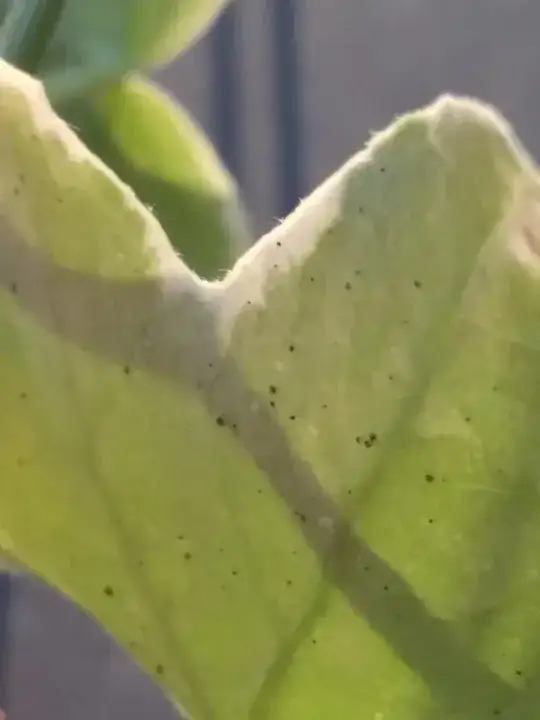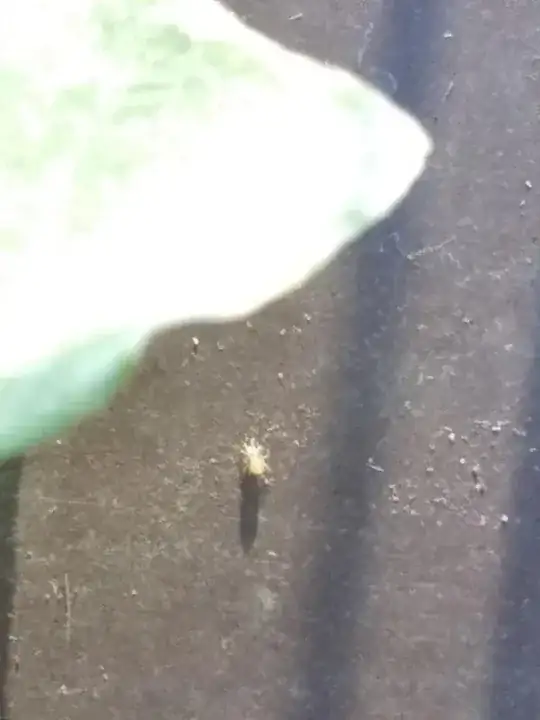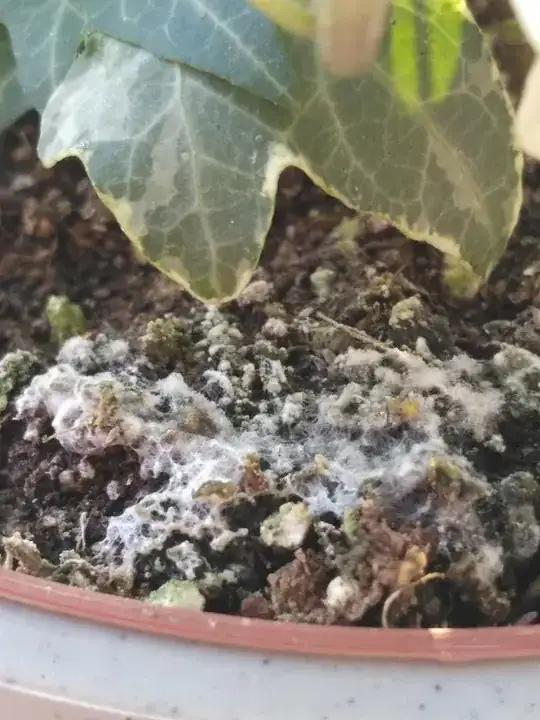That white mite actually looks like a predator mite. The black dots in the first picture look like frass or insect poop, too big for spider mite. What I think you are seeing that looks like webbing is simply dust fibers.
Webbing of spider mite looks like major nets of webbing. Very distinguishable. That white dude looks JUST like a spider mite predator. They do not make webbing. I buy spider mite predators yearly and have exterminated, eliminated completely...words never used in pest control...spider mites and all their eggs. Since there is nothing to eat for the predators the predators have all died.
Spider mites and spider mite predators are almost impossible to see with the naked eye. Especially if you are an old lady, ha ha ha. We watch them under 20X magnification. Pulled up chairs and watched these white predators who are at least, 5X bigger than the mites attack and obliterate these mites. I actually felt sorry for the mites. We had 2 spotted mites. Gold with 2 spots on their shoulders. The abundant webbing the predators used for THEIR eggs while they would suck the juice out of every mite egg leaving a collapsed husk.
Bamboo is correct, you are overwatering. As well as poor drainage, poor soil, a perched water table, or you are simply watering way too much. Do you have a drain hole? Did you use bagged potting soil? Or is that soil garden soil? Did you put gravel or rock beneath the soil and above the drain hole? How do you determine when to water this plant? These are all the regular questions for too wet soil where the roots aren't getting the oxygen they need.
I would certainly repot your plant in fresh, sterilized potting soil. Scrub the pot with soap and water before putting the new soil into the pot 1/3 full.
Gently knock, finger or shake as much old soil off the roots as you can while doing an inspection of the roots removing any mushy, brown damaged roots. Then place your plant on the soil, spread the roots out a bit and fill the pot and around the plant with fresh potting soil, firming the soil as you go up to and within one inch from the rim of the pot.
Water deeply, pick up your watered potted plant to feel the weight of a watered potted plant and do not water again until your potted plant in its pot FEELS LIGHT, definitely lighter. Never water on some schedule if you can help it.
I like Osmocote All Purpose Extended Release balanced fertilizer of 14-14-14. Or Dr. Earth's All Purpose 5-5-5. It is extended release naturally. Use half what the directions tell you. Where fertilizer is concerned, 'Less is Best, More is Death and None is Dumb'.
Once every few months take the plant in its pot into your shower for its watering. Take all the vines in too...so you'll have to consider how you let your vines grow and where. Turn on the cold water, don't use the massage jets, and let it rain for 5 minutes. If there are a lot of vine turn them over a bit to get more dust off the leaves. Allow to drain well and shake off the water a bit and replace it in it's normal spot. Dusty vines in a home are icky looking and not healthy at all for photosynthesis.
I hear my plants saying, "Ahhhhhhh" as I carry them into the shower!
Never ever treat a plant with any pesticide unless you have a positive ID. Guessing is a big no-no even for professionals.
This should solve all problems you have right now. These plants are meant to go without water for short periods. Thick leaves means they store a bit more water than thin easily bruised leaves.
I see no evidence of spider mite from your pictures. There is however, some insect pooping on your plant. The poops are bigger than spider mites and predator mites. If you could get a very enlarged picture of that frass we might be able to ID. I don't see any chewing or yellow spots in these picture, just dust and maybe a good guy insect!?
Your soil looks like garden soil and that does need to be changed ASAP, especially to get rid of the wet soil and fungus. Might even get rid of whatever insect you do have that doesn't belong in the home that came in with the soil.Even if this is potting soil, you need to repot to get rid of the fungus laden wet, airless, soil.
Don't need to use ANY type of pesticide to include soapy water which IS a pesticide. A fairly safe one at that. Not at all helpful for fungus. It isn't the fungus that is your problem, it is simply a symptom of over watering. THE most common mistake new gardeners make. Loving too much. Grins!


